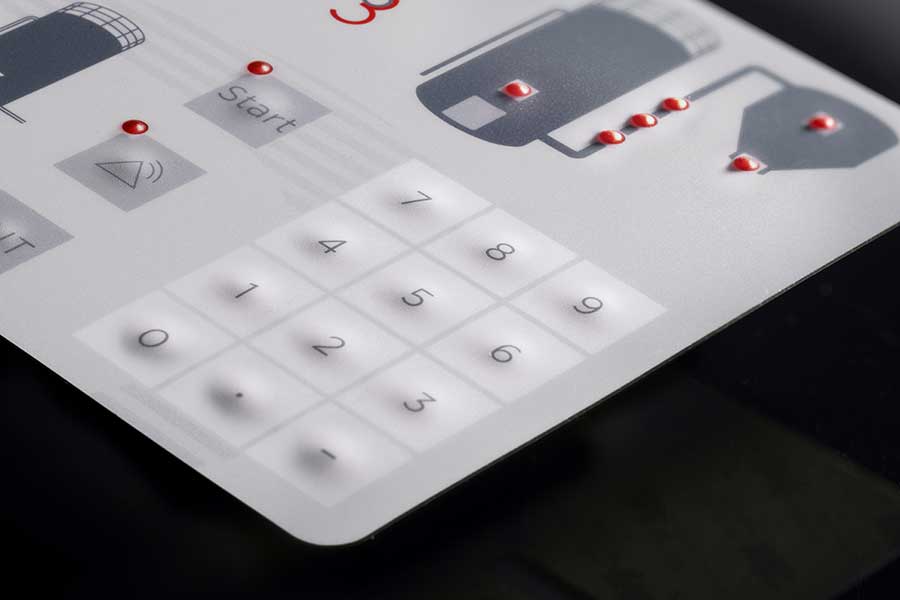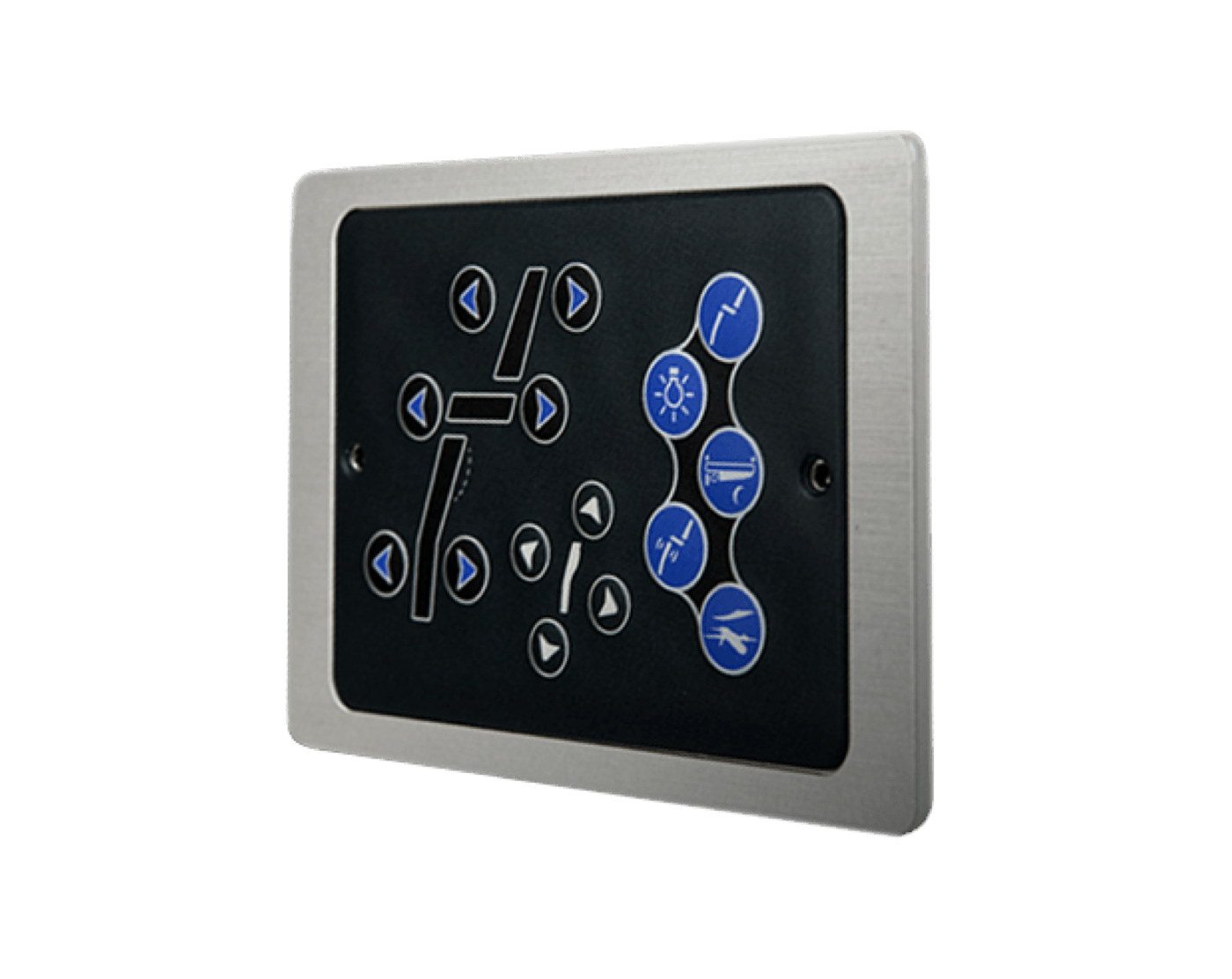Everything About Membrane Layer Change: Recognizing Its Style and Functionality
When you think about the control interfaces in contemporary devices, membrane layer buttons usually enter your mind. These components are greater than simply switches; they mix design and capability flawlessly. Recognizing exactly how they work and what makes them efficient can transform your perspective on daily electronic devices. There are nuances to their design and efficiency that you might not be conscious of. Let's discover what collections membrane layer changes aside from various other control systems.
What Are Membrane Layer Switches?

Their seamless nature makes them very easy to clean and resistant to dust and dampness, an essential attribute in lots of atmospheres. Membrane buttons can also be tailored pertaining to form, size, and graphics, permitting makers to develop unique interfaces customized to certain products. And also, they're lightweight and thin, which assists in lessening the general mass of gadgets. On the whole, membrane switches play a significant duty in enhancing customer experience across a broad variety of applications.
How Membrane Layer Switches Over Job
When you press a key on a membrane layer button, it turns on an uncomplicated yet reliable system. The leading layer, frequently made from versatile product, pushes down onto a conductive layer below it. This activity bridges the space in between conductive traces, finishing an electric circuit. As soon as the circuit shuts, it sends a signal to the tool's controller, which analyzes your input.
You'll see that the tactile responses differs based on the button layout, providing either a soft click or a more noticable reaction. Once you release the trick, the membrane layer go back to its initial position, reopening the circuit and stopping the signal. This process happens nearly immediately, guaranteeing a receptive user experience.
Membrane layer buttons are popular as a result of their resilience and resistance to dust and wetness, making them suitable for different applications, from house devices to clinical devices. Comprehending this operation helps you appreciate their prevalent use.
Trick Elements of Membrane Layer Buttons
Understanding the essential parts of membrane switches is essential for grasping their performance and style. The safety layer shields against environmental elements and wear, extending the button's life expectancy. By comprehending these components, you'll gain understanding right into just how membrane layer switches operate and their significance in numerous applications.
Materials Made Use Of in Membrane Layer Change Layout
The performance and durability of membrane switches heavily depend upon the materials used in their style. You generally run into polyester and polycarbonate as primary substratums due to their excellent strength and adaptability. These materials stand up to scratches and chemicals, making them excellent for requiring atmospheres.
The conductive layers often utilize silver or carbon, picked for their integrity and conductivity. membrane switch manufacturer. Silver offers premium performance, while carbon is a cost-efficient alternative. For the overlay, you could take into consideration a matte or shiny surface, depending upon your visual needs and customer experience
Make certain to select adhesives that hold up against ecological variables like temperature level and moisture. Picking the best materials will guarantee your membrane layer switch stands the test of time.
Design Considerations for Membrane Layer Buttons
While developing membrane layer buttons, it's essential to take right into account different factors that affect their capability and customer experience. Begin by focusing on the format and button dimension; make particular they're intuitive and simple to browse.
Don't forget the visuals design; clear labeling and color comparison are considerable for presence. Confirm your style accommodates ecological variables, like dampness or temperature variations, which could impact performance. Remember the significance that site of screening models with actual users to gather responses and make needed changes. This iterative process aids you improve the style, validating it satisfies both practical and aesthetic needs efficiently. By very carefully taking into consideration these components, you'll produce a membrane switch that improves use and satisfaction.
Applications of Membrane Layer Switches
Membrane buttons are functional parts located in different applications, from industrial tools to customer electronic devices. You'll see their influence in machines that require long lasting user interfaces and in gadgets that gain from streamlined layouts. Understanding these applications helps you appreciate the capability and practicality of membrane buttons in daily technology.
Industrial Tools Usage
When you're wanting to boost the functionality of industrial tools, membrane switches supply a reliable option that combines sturdiness with user-friendly style. These buttons are ideal for rough atmospheres, go now offering resistance to dirt, dampness, and chemicals. You'll locate them in control panels for manufacturing equipments, heating and cooling systems, and medical gadgets, where precision and responsiveness are essential. Their reduced account implies they fit effortlessly into different equipment, saving important room while maintaining ease of use. With personalized graphics and backlighting options, you can produce an instinctive interface for drivers, enhancing effectiveness and security. Plus, their long life-span reduces upkeep prices, making them a clever financial investment for your commercial applications. Accept membrane layer buttons to improve your procedures and enhance total efficiency.
Customer Electronic Devices Combination
In the domain of consumer electronic devices, membrane layer switches play a crucial role in enhancing user interaction and gadget functionality. You'll find them in devices like microwaves, remote controls, and gaming consoles, supplying a smooth means to connect with innovation. Their smooth design permits very easy combination right into numerous products, making controls user-friendly and easy to use. With their capacity to integrate graphics and backlighting, you can delight in a contemporary visual that enhances the tool's total look. Membrane buttons additionally ensure sturdiness and resistance to dust and wetness, expanding the life expectancy of your electronic devices. By picking membrane layer switches, you enhance not just the functionality but likewise the style of your tools, making daily interactions smooth and pleasurable.
Benefits and Drawbacks of Membrane Switches
While membrane layer switches use a series of benefits, they additionally feature some downsides that you must consider. One significant benefit is their compact layout, making them optimal for space-constrained applications. They're likewise economical, providing a resilient option with a low manufacturing cost. In addition, their smooth surface area is easy to clean, improving hygiene in settings like hospitals.

Nonetheless, there are drawbacks. Membrane layer buttons can have a much shorter life expectancy compared to mechanical buttons, particularly under hefty use. They can additionally be much less responsive, which might impact user feedback throughout procedure. In addition, if harmed, fixing them can be difficult and commonly requires complete replacement. Ultimately, their sensitivity to extreme temperatures and ecological conditions may restrict their performance in particular settings. Stabilizing these advantages and disadvantages will assist you establish if membrane layer switches are the right fit for your task.
Often Asked Questions
How Lengthy Do Membrane Changes Commonly Last?
Membrane switches normally last between 5 to 10 years, relying on use and environmental problems. You'll desire to examine aspects like wear, exposure to moisture, and temperature fluctuations to assess their durability effectively.
Can Membrane Layer Changes Be Custom-made for Details Styles?
Yes, you can tailor membrane layer buttons to fit particular layouts (membrane switch manufacturer). You'll have the liberty to select colors, shapes, and layouts that match your job's needs, ensuring they mix perfectly with your general aesthetic
What Is the Price Range for Membrane Switch Over Manufacturing?
The expense variety for membrane layer switch production normally drops between $1 and $10 per system, depending on variables like design complexity, amount, and products. You can get quotes from suppliers to find the very best choice.

Are Membrane Layer Changes Water Resistant or Resistant?
Membrane buttons can more helpful hints be designed to be water resistant or resistant, relying on materials made use of and construction methods. If you require them for damp settings, guarantee you specify those requirements during the design process.
How Do Membrane Switches Compare to Typical Switches?
Membrane layer switches are typically thinner and more versatile than traditional buttons, supplying a streamlined layout. They're often easier to clean and incorporate, yet could not offer the tactile responses you're used to with mechanical choices.
Final thought
